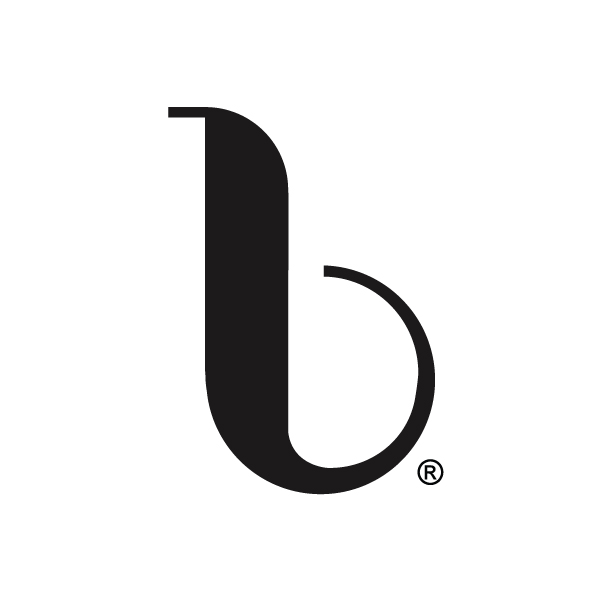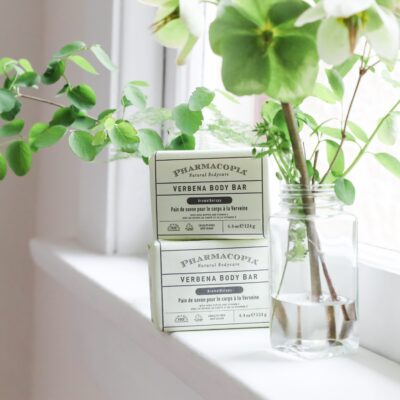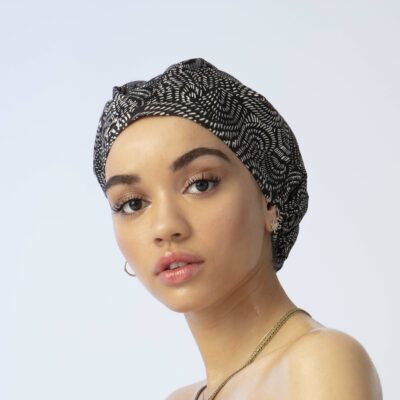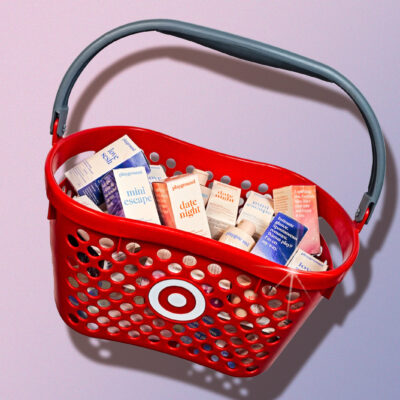
Shopify Introduces Business-To-Business Marketplace Handshake
While the COVID-19 pandemic caused many businesses—travel, physical retail and dining among them—to ground to a halt last year, it also caused some industries to boom, none more so than e-commerce. In the first half of 2020, e-commerce sales in the United States increased over 30% compared to 2019, bringing total online spending to top $347 billion for the six-month period. The accelerating trend of shoppers migrating online has turned the spotlight to digital players that stand to generate significant growth as a result of it.
Shopify is one of the players garnering a lot of attention. Last year, the provider of digital infrastructure for more than 1 million online stores acquired business-to-business marketplace Handshake, a move that positions it as a mounting threat to Amazon. Beauty Independent spoke to Dalia El-Shimy, senior user experience research lead at Shopify, about the company’s recent introduction of Handshake. El-Shimy laid out how Handshake works, best practices for brands using the wholesale platform, and the unique opportunity it presents to the 70,000-plus health and beauty businesses currently active on Shopify.
What is Handshake, and how does it work?
Handshake is a wholesale marketplace. Essentially, retailers who are interested in buying wholesale products to sell on their own stores can go to handshake.com and browse thousands of hand-picked products from one-of-a-kind brands. The suppliers behind those brands are themselves already Shopify merchants selling their products on their own branded stores, but Handshake brings them all together under one roof for a more streamlined product discovery experience.
Retailers can easily connect with suppliers whose products they’re interested in, and then buy those products just by adding them to a cart and going through a simple checkout. This is in contrast with traditional wholesale, which involves a lot of time-consuming back-and-forth communication, discussions, paperwork, agreements, etc., between retailers and suppliers before transactions can actually be finalized. Handshake is free to use for both retailers and brands. There are no fees and no commissions.
What kind of brands is it best for?
We aim to carry distinctive, unique, curated brands. All of our suppliers produce their own products themselves many by hand rather than mass-purchase them from a third party.
Which retailers are participating?
Retailers who participate don’t have to be Shopify merchants themselves. We welcome anyone with a legitimate business interested in connecting with our suppliers, looking to buy wholesale, and wanting to stock their own store accordingly. At the moment, we’re open only to U.S.-based retailers and suppliers, but will be looking to expand in the future.
What do you look for in beauty/wellness/personal care brands selected for Handshake?
We’re looking for brands that are unique and distinctive, that are high-quality, and that match our aesthetic and the expectations of our retailers. Because all suppliers are already Shopify merchants, we can be really thorough with our vetting and make sure that the products and brands we feature are trustworthy and can do well on our retailers’ own stores.
Are there any requirements around the number of products or price points?
No requirements around number of products or price points, only location (U.S. only for now), business legitimacy and trustworthiness in addition to the aesthetics, quality, uniqueness, etc., mentioned before.
How does Handshake work for retailers? How do they use the service?
All they have to do is go through the sign-up process on our website. The validation process for them is a bit different than for suppliers. What we look for primarily is to establish that they are a legitimate business and not someone who is simply trying to buy products [at wholesale rates]. We will ask them for their business address, any sort of legal information that they can provide, like a reseller ID (also known as a sales tax ID, reseller permit or resale certificate).
That’s usually enough for them to get on the website. If we see any indication after that that any of that information is incorrect or perhaps they’re not who they claim to be, then obviously there’s a process for us to block their communication with the suppliers to make sure that we’re protecting our suppliers interests as well.
Are there any beauty/wellness/personal care brands already registered for Handshake? If so, can you share which ones?
We have about 230 beauty and wellness brands on Handshake today. Here are some interesting ones:
Bright Body: Refillable clean beauty for hair, skin and body handcrafted in small batches.
Ms. Betty’s Original: Lip balms, body butter, candles made and packaged with all-natural soy wax, reusable rock glasses, recycled paper dust caps, etc.
{save} skincare: Natural skincare brand specifically formulated for sensitive skin, uses very gentle formulas and ingredients.
Payot: Internationally renowned beauty brand founded in Paris in 1920 and now sold in over 70 countries.
jipsē candles + apothecary: Body products made from ethically sourced ingredients that are vegan, free of harsh chemicals and cruelty-free.
Stella Chroma: Handmade nail polish in unique colors donating to nonprofits that promote STEM careers to girls.
Georgette Klinger: Extensive skincare line drawing from traditional European remedies with fruits and herbs as a natural base.
Are there best practices for brands once they’re on Handshake to set up their profiles or pages? Are there any differences between what their direct-to-consumer website would look like versus their Handshake profile?
Before moving into this B-to-B space, I spent quite a bit of time in B-to-C, and understanding how people design online stores and how this translates into experiences for consumers. A lot of the same principles apply in B-to-B and B-to-C, but there are quite a few things that are different. Some of the things that we do see that applies across the board is suppliers providing authentic stories about their brands and who they are. It’s something that goes a long way towards building trust with customers.
Thinking as a B-to-C customer who’s going on a website or a store that you’ve never shopped with before, being able to see a detailed story of who they are, pictures of the people, perhaps who runs the business, even an address or ways to contact them, how they started the business, all of these are things that instill a lot of trust in folks.
In a B-to-B space, that information plays a very similar role in terms of building trust, but it also provides an added advantage in that, if you are a retailer who is looking for these curated, unique handmade brands to carry in your store, it helps you to know the story of the products that you’re buying so that you can sell the product better to your own customers. What we learned from retailers is that, especially in that space where, again, they’re looking for curated unique brands is, the more they can tell the story to their customer, the more they can get the customer on board with wanting to buy the product. So, any way that we can facilitate the transfer of that information from the supplier to the retailer is always really powerful.
Where we see differences sometimes is in the description of the products themselves. What I hear from suppliers when I talk to them about how they describe their products differently on their retail versus wholesale sites is they say that, on retail, they tend to use language that is far more descriptive, more flowery, where the idea is almost to try and get the customer to imagine themselves with the products. You’re almost selling them on a lifestyle. You’re selling them on this idea of who they could be or what value they could have if they bought that product.
When it comes to B-to-B, there seems to be more of a focus on wanting to provide as much pragmatic information as possible. Anything to do with materials, shapes, sizes, shipping information, anything that helps the retailer who’s purchasing from the supplier have as much detail as possible before they commit to buying a product, because obviously the commitment you’re making in wholesale is quite different from the one you’re making in retail.
Personally, I think there’s still value in providing more of the story on the product pages as well for the wholesale side, because, again, it helps the retailer sell the product more easily to their own customers. So, I would definitely advise to focus on the facts, be very specific about dimensions, size, material, colors, all of that, but also do provide a little bit of that story that you can give people to make it easier for them on their end to sell the product.
If brands don’t get accepted at first, can they reapply? Do you provide guidance on what they need to do to be accepted?
Our business operations team has a list of criteria for what they’re looking for when they’re approving brands. Some of these criteria are, for example, are you based in the U.S.? Are you already using Shopify? Because the merchants who are the suppliers on Handshake were already on Shopify, we do look for things like any fraud, risks, any transactions that have taken place making sure that we’re covering our bases in terms of being able to see that those are suppliers that we trust. We also make sure that the products they’re selling don’t fall into prohibited categories (e.g., CBD products).
Beyond that, if it’s a brand that fits all of these parameters, and they are providing a product that falls within the categories of Handshake, we are somewhat less subjective in terms of saying this is to our tastes or not to our tastes, but we might provide feedback in terms of wanting them to work on their product photography or their story to make sure that it fits with Handshake better.
We do try to curate as much as possible, but, at the same time, it’s a delicate balance of also wanting to provide breadth of product that appeals to people. We’re not gonna say that only the things that we like should be sold on Handshake. Some of the feedback that we might give back to suppliers is maybe working on certain aspects of their product or their store to help it fit the visual branding and the expectations of the retailers that are coming to Handshake.
If a supplier does apply, and they do pass all of those criteria in terms of location, trust, approved categories and all of these things, but we give them feedback to work on something and come back, it’s never a closed door where you get rejected and never get to come back. It’s always a give-and-take process. We want people on our platform. We want to help them get on there.
What are you and the Handshake team most excited about?
I’m a researcher. So, I get excited by questions and problems, and thinking about how to solve things. For me, the thing that I find most exciting that is sort of open for us is: How are we going to find that balance between curation and saturation? How will we be able to provide enough breadth of product and representative products, and have these diverse brands on our website that appeal to a wide array of retailers without necessarily selling everything under the sun where people can’t even find what they’re looking for?
I think that this is a challenge that anyone who is working on a marketplace has to contend with, and very much something that informs the identity and the vision for the marketplace. I’m looking forward to us figuring out where we’re going to find that balance for ourselves. Essentially, part of figuring out that problem is also part of figuring out who Handshake wants to be in that space, who our audience is going to be and how we want to position ourselves as a marketplace.
Brands interested in learning more about Handshake can do so here.





Leave a Reply
You must be logged in to post a comment.